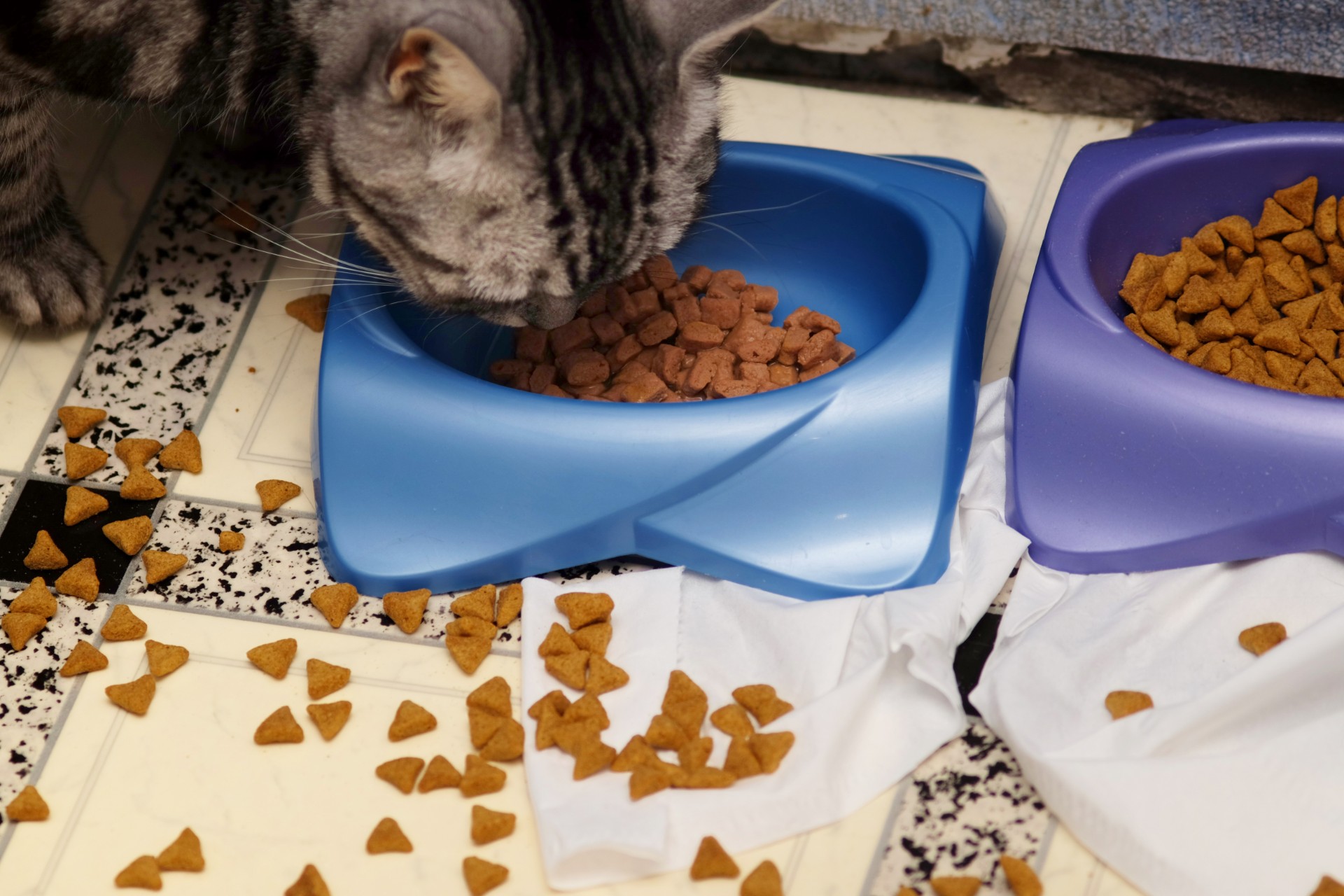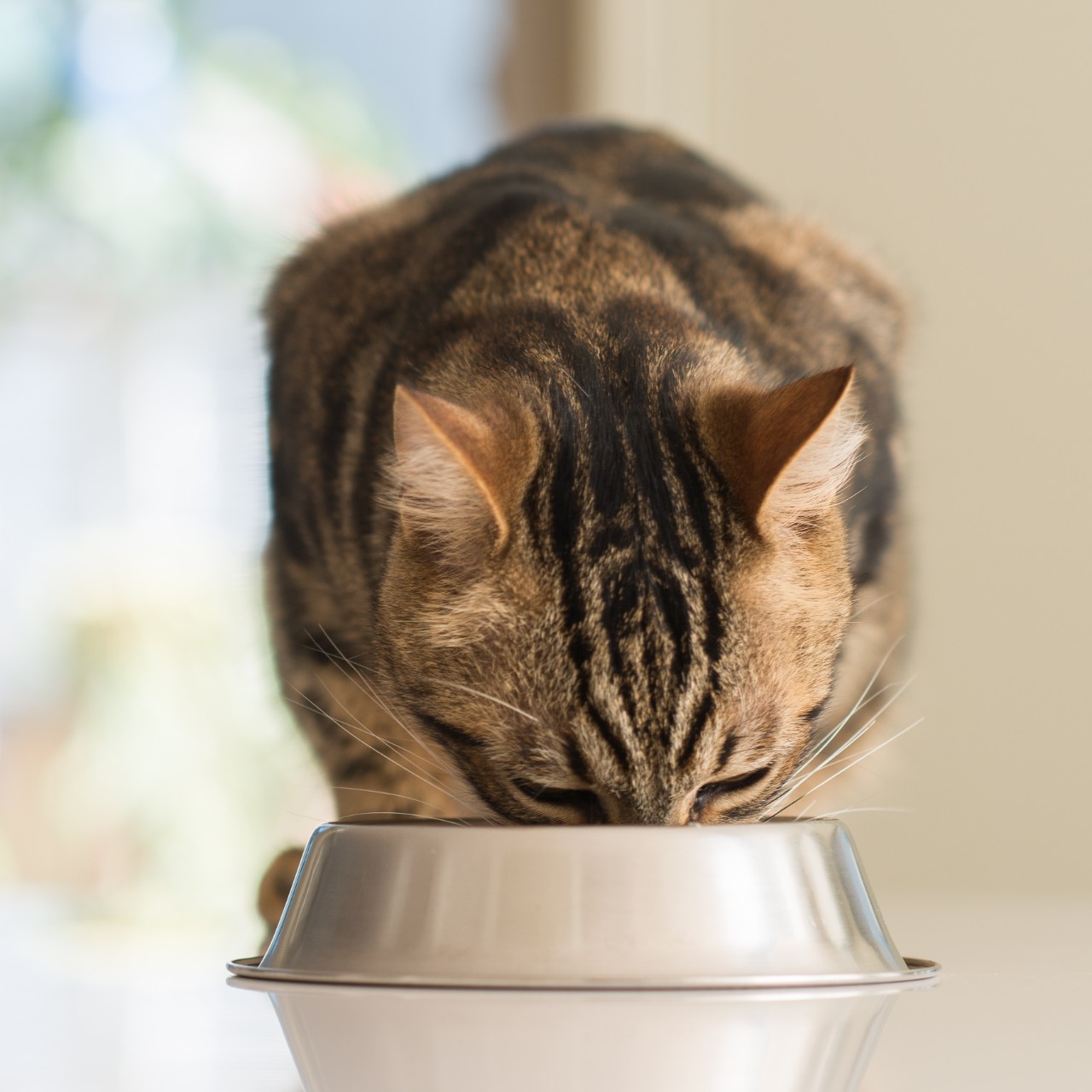Mealtimes with your cat have become … eventful. You put food on the floor or in your cat’s favorite place, and the next thing you know, it’s become the toy of the year. If your cat is playing with its food, it’s not just boredom.
Cat behavior is often a mystery, but there are some excellent reasons your kitchen has become a playground. Let’s take a look at some very good reasons your cat plays with food and what you can do to encourage your cat to eat.

The predatory instinct
Modern cats don’t know what hunger really is. Most of them have all their needs met and then some. The predatory instinct isn’t the same as hunger, however, which could be reason No. 1 your cat is now playing with its food.
If cats never get truly hungry, there’s no reason to scarf down food right when you put it down. Instead, those little pieces of kibble could become an attractive bit of prey spilling out on your floor. This gives cats the thrill of the chase they’re missing in our homes. The need to play and hunt often supersede a cat’s desire to eat. Even in some studies, cats were more likely to pause eating to hunt and play with toy “prey” than continue with their meal. This says that the predatory instinct is ultra-strong with felines, including house cats.
How cats eat in the wild
When we aren’t feeding cats, they eat very differently than the typical mealtimes. Wild cats usually eat small meals all day long instead of one big meal. When they do manage to snag a big meal, it’s usually a protracted all-out effort. Your sweet house cat isn’t getting much of that action. Instead, the natural urge to avoid boredom and find entertainment and activity anywhere kicks in. And because the cat knows food will always be there, there’s no reason to eat quickly.
If your cat isn’t getting stimulation living a life of leisure indoors, it will find it somewhere. Even if you’re making time to play with your cat, that hunting drive could be strong enough to kick in, and your cat’s food is just a trigger.
How to cut down on the food play
If your cat’s playing is driving you crazy, there are a few things you can do to help encourage them to eat instead of slinging food all over the floor.
- Choose predatory toys — A toy that allows your cat to chase and run around could be a great way to get out some energy before mealtimes. Choose a toy that is specifically for this type of energy release and use it an hour before mealtimes.
- Feed your cat the right serving size — Feeding your cat too much food leads to weight gain and other health problems. But it also leaves your cat feeling like food isn’t that important.
- Don’t leave the food out — If you leave your cat food out all day long and fill it when it’s empty, it’s a never-ending smorgasbord. Instead, leave your cat’s food out for a set amount of time and then take it back up again. Your cat will learn that there’s no time to play.
- Ignore begging — If your cat begs and you always dump food in the bowl, it may not feel that food is very important for eating. Ignore begging and stick to predetermined mealtimes to help prevent your cat from playing instead of eating.
- Find spillproof bowls — If your cat isn’t able to push food out of the bowl, mealtime becomes far less fun. If your cat can’t bat food across the floor, it may not become a piece of prey.
- Consider a puzzle bowl — If your cat just can’t seem to quit playing, embrace it instead. Puzzle bowls help encourage your cat’s natural curiosity and make mealtimes more fun. Your cat gets stimulation, and you get relief from dumped food bowls.

Help your cat thrive with enrichment
Building a thriving environment for your cat starts with the right enrichment. If your cat is constantly playing with its food, it could be time for you to reevaluate your cat’s toys and play instincts. Make sure you’re taking time to play one on one with your cat. Also, make sure that food hasn’t become a boring event. If your cat feels that food is always available, it may not be interested in eating. Having set mealtimes and ignoring begging could help separate playing from eating once and for all. If nothing else, getting your cat some quality playtime before meals and investing in a puzzle bowl might make being an indoor cat just a little more fun.
If you want to know more about your pets, PawTracks got you covered.
Editors' Recommendations
- Wondering why cats chirp? Fascinating reasons why your cat chirps at birds (and you)
- How to cat-proof your balcony before the unthinkable happens
- There’s a totally normal reason cats throw up after eating grass – here’s why
- When can kittens leave their mom? Don’t separate them too early
- When do kittens’ eyes change colors? The answer is so cool – here’s what to know



